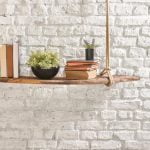Are you looking to bring the timeless beauty and elegance of Tudor style into your home? In this article, we will explore how to decorate a Tudor style home, from understanding the architectural and design elements to choosing the right color palette, furnishing, and decor ideas, as well as styling the exterior.
Tudor style homes have a rich history dating back to the 15th century in England, known for their distinctive half-timbered construction and steeply pitched roofs. Understanding the key elements of this architecture is crucial in successfully decorating a Tudor style home. By incorporating wood and stone accents while maintaining authenticity in decor details, you can create a cozy and charming atmosphere within your living space.
When it comes to decorating a Tudor style home, selecting the right color palette is essential in capturing the essence of this architectural style. From earthy tones to warm neutrals, we will delve into how these colors can complement the interior and exterior of your Tudor style home. Additionally, furnishing and decor ideas inspired by Tudor design will be explored to help you achieve a cohesive look that honors the tradition of this captivating architectural style.
Understanding the Tudor Architecture and Design Elements
The Tudor style is a timeless and elegant architectural design that harkens back to the medieval English era. Understanding the key elements of Tudor architecture is essential when decorating a home in this style. From the distinctive half-timbering to the steeply pitched roofs, there are several design elements that make a Tudor style home unique.
When decorating a Tudor style home, it’s important to stay true to its architectural roots. Here are some key design elements to consider:
- Half-timbering: This characteristic feature involves exposed wood framing filled in with plaster or brick. It creates a striking visual effect and adds texture to the exterior of the home.
- Steeply pitched roofs: The steep roofline of Tudor homes is not only aesthetically pleasing but also serves a functional purpose, shedding snow and rain effectively.
- Leaded glass windows: Many Tudor style homes feature leaded glass windows, often with diamond or rectangular panes. These windows add charm and character to the home’s facade.
Incorporating these design elements into the interior and exterior decor will help maintain the authentic Tudor style aesthetic throughout your home. Let’s explore how to decorate a tudor style home by leveraging these essential design elements for maximum impact.
Choosing the Right Color Palette for a Tudor Style Home
Tudor style homes are known for their distinctive architecture, characterized by half-timbering, steeply pitched gable roofs, and decorative stone or brickwork. When it comes to decorating the interior of a Tudor style home, it’s important to choose the right color palette that complements the unique architectural elements while also creating a warm and inviting atmosphere.
When selecting colors for the walls in a Tudor style home, neutrals and earth tones are often the best choice to enhance the cozy and rustic feel of the space. Consider using warm shades of beige, cream, or taupe to create a sense of warmth and comfort in the rooms. Additionally, incorporating deeper hues such as rich browns, deep reds, and forest greens can add depth and richness to the overall color scheme.
In addition to wall colors, it’s essential to consider the color of woodwork and trim in a Tudor style home. Opt for natural wood finishes such as oak or mahogany to complement the traditional design elements of the home. For a more dramatic effect, consider using dark-stained wood accents against lighter wall colors to create contrast and showcase the intricate details of the architecture.
To tie everything together in a cohesive color palette for a Tudor style home, consider adding in accents of classic Tudor colors such as royal blue or emerald green. These accent colors can be incorporated through textiles like curtains or upholstery, or through decorative accessories such as pottery or artwork.
By carefully selecting a color palette that complements the architectural features while also reflecting your personal style, you can successfully decorate a Tudor style home that feels both timeless and inviting.
- Neutral wall colors such as beige, cream, and taupe
- Deep hues like rich browns, deep reds, and forest greens
- Dark-stained wood accents for contrast
- Accent colors of royal blue or emerald green for added drama
Furnishing and Decor Ideas for Tudor Style Interiors
When it comes to decorating a Tudor style home, it’s important to choose furnishings and decor that complement the unique architectural features of this historic design. One key aspect of furnishing a Tudor style interior is to incorporate rich, dark wood furniture pieces, such as oak or walnut, which are characteristic of the period. Look for pieces with intricate carvings and details to add to the overall ambiance of the space.
In addition to wooden furniture, textiles play a crucial role in Tudor style interiors. Incorporate heavy fabrics such as velvet, tapestries, and damasks in deep, rich colors like burgundy, forest green, and royal blue to add warmth and luxury to the space. When selecting upholstery for sofas and armchairs, consider opting for tufted or buttoned designs to evoke a sense of traditional elegance.
To complete the look of a Tudor style interior, it’s essential to pay attention to decorative accessories. Look for wrought iron lighting fixtures, elaborate chandeliers, antique mirrors with ornate frames, and stained glass windows to enhance the historical charm of the home. Additionally, incorporating elements such as brass or copper candle holders, decorative tapestries, and Persian rugs can further enrich the ambiance of a Tudor style interior.
Overall, when decorating a Tudor style home interior, the key is to embrace its historical character while also infusing personal touches. By carefully selecting furnishings and decor that highlight the unique architectural elements of this design style, homeowners can create a warm and inviting space that pays homage to the timeless appeal of Tudor architecture.
| Tudor Style Furnishings | Tudor Style Decor |
|---|---|
| Rich dark wood furniture (oak/walnut) | Wrought iron lighting fixtures |
| Heavy fabrics (velvet/tapestries/damasks) | Elaborate chandeliers |
| Tufted or buttoned upholstery | Antique mirrors with ornate frames |
Incorporating Wood and Stone Accents in Tudor Style Decor
Tudor style homes are known for their distinctive architectural elements and design features that create a timeless and classic look. One of the key aspects of decorating a Tudor style home is incorporating wood and stone accents in the decor. These natural materials are essential to achieving an authentic Tudor style aesthetic and adding warmth and character to the interior of the home.
Wood Accents
When it comes to incorporating wood accents in a Tudor style home, oak is the most traditional choice. Exposed wooden beams on the ceilings are a hallmark feature of Tudor architecture, so if your home doesn’t already have them, consider adding faux beams or decorative wooden trusses to create an authentic look.
In addition to beams, wooden paneling or wainscoting can be used on walls to add texture and visual interest. Furniture pieces such as tables, chairs, and cabinets made from dark-stained oak or other solid woods can also complement the Tudor style decor.
Stone Accents
Incorporating stone accents into the interior of a Tudor style home can further enhance its old-world charm. Stone fireplace surrounds or mantels are a typical feature in Tudor homes and can serve as a focal point in the living room or family room. Another way to incorporate stone is by using it for flooring in entryways, kitchens, or bathrooms.
Additionally, accent walls made of exposed stone or textured stone wallpaper can bring an element of authenticity to the decor. When selecting stone accents, aim for earthy tones such as warm browns, grays, and tans to stay true to the Tudor style color palette.
Styling the Exterior of a Tudor Style Home
When it comes to decorating a Tudor style home, paying attention to the exterior is just as important as the interior. The distinctive design elements of a Tudor home’s facade set it apart from other architectural styles and create an inviting and charming curb appeal. Here are some tips on how to style the exterior of a Tudor style home.
Emphasize the Half-Timbering and Textured Walls
One of the most recognizable features of a Tudor style home is the half-timbering construction, where wooden beams are exposed and filled in with stucco or brick. To enhance this characteristic, consider using contrasting colors to highlight the lines and create visual interest. For example, dark wood beams against light stucco or brick can make the half-timbering stand out even more.
Choose Fitting Roofing Materials
Tudor style homes traditionally have steeply pitched roofs with multiple gables. When selecting roofing materials, opt for materials that complement the overall aesthetic, such as slate or wood shingles. These materials not only add to the authenticity of the home’s exterior but also contribute to its timeless appeal.
Add Character With Unique Doors and Windows
The doors and windows of a Tudor style home play a significant role in defining its character. Look for door and window designs that feature arched openings, leaded glass panes, and decorative hardware. These details serve as focal points and contribute to the charm of the exterior, creating an authentic Tudor look.
Decorating a Tudor style home involves carefully attending to both its interior and exterior elements. By considering these tips for styling the exterior of a Tudor style home, homeowners can achieve an authentic and visually appealing representation of this classic architectural style
Adding Tudor-Inspired Details and Accessories
When it comes to decorating a Tudor style home, it’s all about paying attention to the details. One of the key elements of Tudor design is the use of ornate details and accessories that give the space a sense of history and character. Incorporating Tudor-inspired details can really bring the whole look together and create an authentic atmosphere in your home.
One way to add Tudor-inspired details to your home is to incorporate intricate woodwork and molding. This can be in the form of exposed ceiling beams, carved wood paneling, or decorative moldings on doors and windows. These details not only add visual interest but also contribute to the overall historic feel of a Tudor style home.
Another important aspect of Tudor design is the use of rich, luxurious fabrics and textiles. Think tapestries, velvet upholstery, and heavy drapes in deep jewel tones. These fabrics can be used for curtains, upholstery, pillows, and even wall hangings to add warmth and texture to your interior spaces.
In addition to these details, don’t forget about small accessories like wrought iron fixtures, candelabras, stained glass windows, and antique furnishings. These pieces all help to enhance the overall Tudor aesthetic and can be easily incorporated into your decor.
| Tudor Detail | Description |
|---|---|
| Intricate Woodwork | Exposed ceiling beams, carved wood paneling, decorative moldings |
| Luxurious Fabrics | Tapestries, velvet upholstery, heavy drapes in jewel tones |
| Small Accessories | Wrought iron fixtures, candelabras, stained glass windows |
Maintaining the Authenticity of Tudor Style Decor
When it comes to decorating a Tudor style home, maintaining the authenticity of the design is essential to capturing the charm and character of this architectural style. One of the key elements in maintaining authenticity is by using materials that are characteristic of Tudor architecture.
This includes incorporating wood and stone accents throughout the interior and exterior of the home. Exposed wooden beams, oak paneling, and stone fireplaces are classic features commonly found in Tudor homes that can easily be showcased through thoughtful decorating.
Another way to maintain authenticity in Tudor style decor is by paying attention to details such as the use of leaded glass windows, intricate ironwork, and stucco or half-timbered facades. These details add depth and texture to the overall look of a Tudor home and can be emphasized through careful selection of furnishings and accessories.
For instance, choosing light fixtures with wrought iron or incorporating decorative leaded glass elements into doors or windows are ways to stay true to the original Tudor design.
In addition, paying attention to color schemes that are historically accurate for Tudor homes is crucial for maintaining authenticity in decor. The use of earthy tones such as warm browns, deep greens, and rich reds can help create a cozy and inviting atmosphere within a Tudor interior.
By selecting colors that were commonly used during the Tudor period, homeowners can ensure that their decor reflects the traditional style of these timeless homes. Overall, maintaining the authenticity of Tudor style decor involves a thoughtful approach to incorporating architectural elements, materials, details, and color schemes that are true to the historical roots of this design.
Conclusion
In conclusion, decorating a Tudor style home can be a rewarding and fulfilling experience if executed thoughtfully and with attention to detail. Understanding the architectural and design elements of Tudor homes is crucial when it comes to selecting the right color palette, furnishings, and decor.
Incorporating wood and stone accents in the interior design adds an authentic touch to the space, while styling the exterior with classic features such as half-timbering and diamond-shaped leaded glass windows further enhances its Tudor charm.
When it comes to adding Tudor-inspired details and accessories, consider incorporating traditional elements such as dark wooden beams, wrought iron fixtures, and ornate tapestries. It’s important to maintain the authenticity of Tudor style decor by preserving original features and sourcing period-appropriate materials for any renovations or additions. In doing so, you can ensure that your Tudor style home remains true to its unique historical character.
Overall, successfully decorating a Tudor style home requires a deep appreciation for its timeless appeal and a commitment to honoring its heritage. By following these tips and guidelines on how to decorate a Tudor style home, homeowners can create a warm, inviting space that exudes old-world charm while still catering to modern-day comfort and convenience.
Frequently Asked Questions
How Do I Make My House Look Tudor?
To make your house look Tudor, start by adding dark wood beams to the exterior or painting them on if they aren’t already there. Use stucco or stone for the walls and consider adding decorative half-timbering for an authentic Tudor style.
What Are the Colors for a Tudor-Style House?
Colors for a Tudor-style house typically include earthy tones such as browns, greens, and warm neutrals like cream or beige. Darker colors can be used for the wood beams and accents to create a classic Tudor color palette.
How Do I Update My Tudor Home?
To update your Tudor home, consider modernizing the interior while maintaining the exterior’s historic charm. Update fixtures, appliances, and finishes to more contemporary styles while preserving and showcasing the unique architectural features of the house. Additionally, landscaping changes can also help freshen up the overall look of a Tudor home.

I’m thrilled to be your companion on this exciting journey through the world of home decor and design. With a passion for turning houses into homes and a keen eye for the finer details, I’m here to help you transform your living spaces into beautiful, functional, and meaningful havens.





